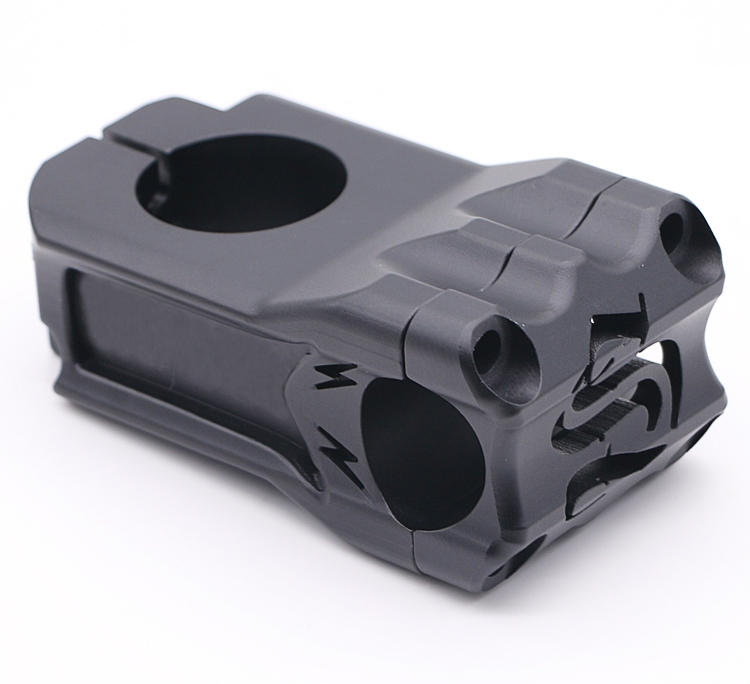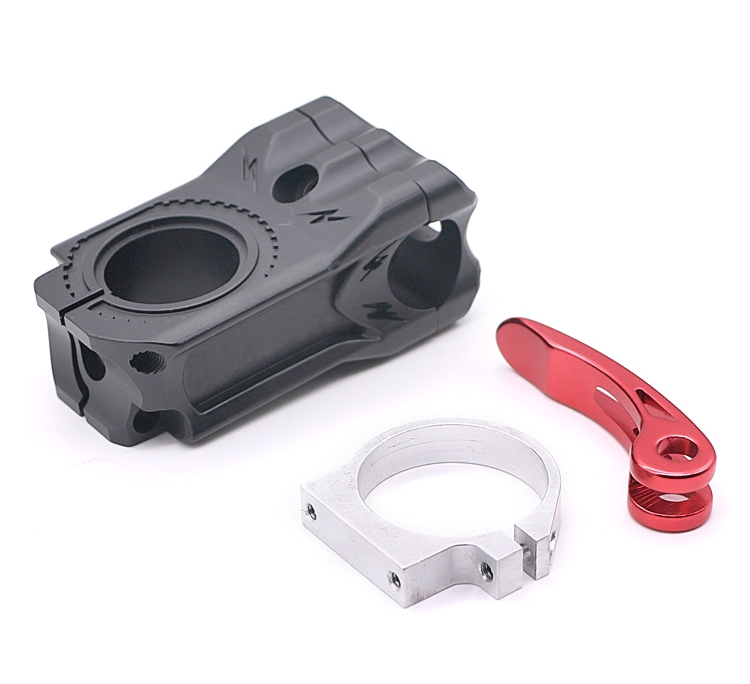Why You Should Consider Using a Bike Handlebar Extender or Extension?
Do you find your bike handlebars uncomfortable for long rides? Or do you need more space for better control? Discover how a bike handlebar extension can significantly improve your cycling experience by enhancing comfort and maneuverability.
A bike handlebar extender is a simple yet effective accessory that can transform your ride. Whether you’re looking for more comfort on long trips, a better posture, or more storage space, using a handlebar extension like a mountain bike handlebar extension or bicycle handlebar extension bar can be the perfect solution.
Now, let’s take a deeper dive into the different types of handlebar extenders and how they can be installed to improve your cycling performance.
What is a Bike Handlebar Extender?
A bike handlebar extender is a tool that increases the length of your bike’s handlebars, allowing for a wider grip, improved control, and additional comfort. This is especially useful for riders who spend long hours cycling or need extra space for accessories. It is ideal for long-distance riders, commuters, and those who want to customize their bike setup for better ergonomics.
There are different kinds of handlebar extensions bicycle designed for various cycling needs. Some are for mountain bike handlebar extensions, others are for road bike handlebar extensions, or even for more specialized uses, such as bike folding handlebars. These extensions also vary in terms of size, material, and adjustability, catering to diverse rider preferences.
Understanding Bike Handlebar Extender vs. Bike Handlebar Extension
While many people use the terms bike handlebar extender and bike handlebar extension interchangeably, there are some differences. A bike handlebar extender typically refers to a longer piece added to the handlebars to increase their reach, while a handlebar extension bar often refers to a more complex setup that includes adjustments for height or angle.
For instance, a bike steerer tube extender can raise your handlebars, offering more control and comfort for long rides. On the other hand, a mountain bike handlebar extension is more robust, designed to withstand rough terrains. Similarly, some bike handlebar extensions are designed specifically for wrist support, helping to reduce strain on your hands during extended cycling sessions.
Why Do You Need a Bike Handlebar Extension?
There are several reasons why a bike handlebar extension might be necessary for your bike:
1. Improve Comfort
One of the most significant benefits of using a bicycle handlebar extender is increased comfort, especially during long rides. The ability to adjust the handlebars with a handlebar riser extension or extended handlebar stem helps reduce pressure on your wrists and back.
2. Provide Extra Storage Space
Using a bicycle handlebar extension bar can also provide you with the extra space needed for attaching bags or storage options, enhancing the functionality of your bike. This is particularly useful for cyclists who enjoy long-distance trips and need extra room for essentials.
3. Enhance Riding Posture
When combined with other ergonomic adjustments, handlebar extensions bicycle can help maintain a more natural and comfortable riding position. This is particularly beneficial for cyclists who spend hours on their bikes, as it helps to prevent fatigue and reduce muscle strain.
What Are the Main Uses of a Bike Handlebar Extension?
Bike handlebar extensions serve multiple purposes, enhancing comfort, control, and performance for different types of cycling. Below are the key uses of handlebar extensions:
1. Increase Riding Space
One primary function of bike handlebar extensions is to provide more space for comfortable hand placement. For instance, a bicycle handlebar extension gives you the ability to change hand positions and experiment with different grips, which can alleviate strain during long rides.
2. Support for Specialized Rides
Cyclists who engage in mountain biking may find the need for mountain bike extension handlebars, which offer greater stability and control over rough terrain. Similarly, road bike handlebar extensions provide a sleek, aerodynamic advantage for road cyclists looking to improve their posture.
3. Bike Fork Extension
In certain cases, bike fork extension can work in tandem with handlebar extenders for bikes to provide the necessary adjustments for specific riding conditions.
Types of Bike Handlebar Extenders
There are various types of bike handlebar extensions, each designed for specific cycling needs. Some are simple add-ons that extend the handlebars, while others provide more advanced features like height adjustments or wrist support.
1. Fixed Handlebar Extensions
Fixed bike handlebar extension bars are straightforward to install and provide an easy way to extend your handlebars without changing the bike’s structure. They are typically made of lightweight materials like aluminum, making them a good option for road cyclists who need minimal weight.
2. Adjustable Handlebar Extensions
If you need more flexibility, adjustable handlebar extensions allow you to change the angle and height of the handlebars. These are especially useful for riders who want to tailor their bike setup for comfort or performance. The bicycle handlebar adjustable extension for wrist support is a great example of this type of extension.
3. Specialized Handlebar Extensions
For more specialized uses, mountain bike handlebar extenders are designed to be more durable and provide better control on rough terrain. For instance, bike fork extensions or bike gooseneck extension can raise your handlebars and help you maintain better balance and posture during challenging rides.
Main Benefits of a Bike Handlebar Extension
A bike handlebar extension enhances both comfort and performance, making it an essential upgrade for cyclists. Below are the key benefits presented in a structured table:
| Benefit | Description |
|---|---|
| Enhanced Comfort | Handlebar extensions allow for multiple hand positions, reducing wrist strain and discomfort during long rides. Riders who experience fatigue from constant gripping can benefit from added wrist support. |
| Better Control | With a handlebar extension mount, cyclists gain improved handling, especially at high speeds or on rough terrains. This is particularly useful for road cyclists and mountain bikers who need precise control. |
| Improved Ride Stability | An extended handlebar stem helps distribute weight more evenly, reducing fatigue and enhancing bike handling for a more stable ride. |
How to Choose the Right Bike Handlebar Extension?
When selecting a bike handlebar extender, consider the following factors:
1. Purpose of Use
Determine whether you need a bike handlebar extension for comfort, performance, or both. For long-distance cycling, bike folding handlebars or handlebar extensions designed for wrist support might be ideal. For mountain biking, a mountain bike handlebar extension provides a more rugged solution.
2. Material and Durability
Different materials offer varying levels of strength and weight. For example, bicycle handlebar extensions made from lightweight aluminum are great for road cycling, while carbon fiber extensions might be used for high-performance setups.
3. Handlebar Compatibility
Make sure the handlebar extensions bicycle are compatible with your current setup. You may need a bicycle handlebar extender mount or an adjustable handlebar riser extension depending on your bike model.
How to Install a Bike Handlebar Extension?
Installing a bike handlebar extension is a relatively simple process, especially for basic models, but it’s important to follow the manufacturer’s instructions for safety. Start by removing the handlebars if necessary. Next, attach the extender to the bike’s frame or steering tube, ensuring it is securely fixed. If you’re using additional components, like a handlebar extension bar or handlebar spacers, install them as well. Finally, double-check the alignment and make sure all bolts are tightened properly before taking your bike for a ride.
How to Extend Handlebars?
1. Use a Handlebar Extension Bar
A handlebar extension bar is a simple yet effective way to extend the length of your handlebars. This bar adds additional space, allowing for more comfortable hand placements during rides. It’s especially useful if you’re looking to reduce wrist strain or if you want more flexibility in how you hold the bars.
2. Install a Handlebar Stem Extension
A handlebar stem extension is perfect if you need to increase the height of your handlebars. This method raises the handlebars, helping to improve your posture and ride comfort, especially on long-distance rides or rough trails.
3. Use a Bike Fork Extension
If you’re looking to extend the length between the wheel and handlebars, a bike fork extension might be the best choice. This modification can alter your bike’s frame geometry, offering more space for a more comfortable riding position and improved control.
4. Add Handlebar Risers or Spacers
If your bike has a threadless stem, adding handlebar risers or spacers can be a quick and effective way to raise the handlebars. This method is often used to help riders achieve a more upright riding position, which can enhance comfort and reduce strain, especially for those with back or neck issues.
5. Use a Gooseneck or Adjustable Stem
For those who want flexibility and comfort, a gooseneck or adjustable stem is an excellent option. These stems allow you to adjust the angle and height of your handlebars, making it easier to fine-tune your riding position and achieve better ergonomics.
In sum, Extending your handlebars can significantly enhance comfort, control, and handling during your rides. Depending on your specific needs and bike type, the most suitable method for extending your handlebars could involve using a handlebar extension bar, stem extension, or even fork extensions. If you’re looking for more adjustability, a gooseneck or adjustable stem might be the perfect solution. Whichever method you choose, make sure you select parts that are compatible with your bike and that you install them securely. After making adjustments, test ride your bike to ensure that the handlebars are in the right position for optimal comfort and control.
VMT Provides CNC Machining Handlebar Accessories Services
We provide CNC machining handlebar accessories services that ensure unparalleled accuracy and quality in every product crafted. Each accessory undergoes meticulous machining to guarantee durability and resilience, enabling them to endure even the harshest conditions.
Our precision-engineered edges, paired with lightweight construction, distinguish these handlebar accessories. By maintaining a tight tolerance of 0.01 mm, VMT guarantees a secure and smooth fit, thereby enhancing overall performance. (Note: If you want to read more about CNC machined handlebar accessories, you can click here.)
In addition, We also offer a comprehensive range of services including CNC milling, CNC turning, 5-axis CNC machining, sheet metal processing, and 3D printing.
Frequently Asked Questions
How to Install Handlebar Spacer?
To install a handlebar spacer:
- Loosen the stem bolts that hold the handlebars in place.
- Remove the handlebars from the stem.
- Place the spacer between the stem and headset, ensuring it’s aligned with the fork.
- Reinstall the handlebars on top of the spacer.
- Tighten the stem bolts evenly to secure the handlebars in the desired position.
Do Handlebar Risers Affect Handling?
Yes, handlebar risers can affect handling. By raising the handlebars, they change your riding position, which can result in a more upright posture. This can make the bike feel more comfortable but may reduce handling precision at high speeds or during aggressive turns. It’s important to find the right balance for your riding style.
What do Handlebar Spacers Do?
Handlebar spacers are used to adjust the height of the handlebars by adding or removing them between the stem and the headset. They help fine-tune the riding position for comfort or performance. Spacers allow for easy adjustments without needing to replace the entire stem or handlebars.
What Are the Handlebars on a Bike Called?
The handlebars on a bike are simply called “handlebars” or “bike handlebars.” They are the component that allows the rider to steer and control the bike. Different types of handlebars are designed for various riding styles, such as road cycling, mountain biking, or commuting.
What Is the Handle of a Bicycle Called?
The handle of a bicycle is generally referred to as “handlebars,” but some parts of the handlebars also have specific names:
- Stem – Connects the handlebars to the bike’s frame.
- Grips – The rubber or foam sections where the rider places their hands.
- Drops & Hoods – Found on road bike handlebars for different hand positions.
Which Handlebar Is Best for a Bike?
The best handlebar depends on your riding style:
- Flat Handlebars – Great for casual riders and mountain biking.
- Drop Handlebars – Ideal for road bikes, offering an aerodynamic position.
- Bullhorn Handlebars – Provide a forward-leaning position, good for speed.
- Aero Bars – Used in time trials for maximum aerodynamics.
Choosing the right handlebar improves comfort, control, and performance.






